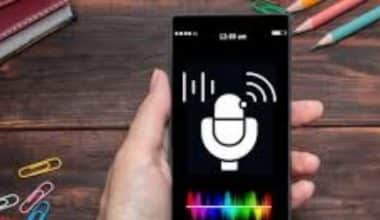Educators have been concerned about the impact of ChatGPT, a tool developed by OpenAI that can spit out entire essays, computer code, and poetry, since its release in November 2022. But, just as ChatGPT and other AI-generating tools have made national headlines, new detector tools have emerged to determine whether a piece of text was written by a human or a bot. Here in this guide, we will analyze the best free and paid AI detection tools and also buttress more on the open AI detection tool. Let’s get into detail!
What is AI Detection Tool?
AI detection tools are pieces of software that can be used to detect or sniff out AI-generated content. For the time being, it may be easier to tell if something is AI generated because it sounds robotic, or if someone’s hand in an image is missing two fingers. Humans may find it more difficult to identify key differences as generation tools become more sophisticated. Regardless of future developments, detection tools can be more useful than our own deductive abilities in classifying AI-generated content, and there are several options available. We’ll go over a few of them and rate their effectiveness below.
How Does AI Detection Work?
This tool checks content by running it through a fine-tuned model trained on different batch documents submitted to each of the AI detectors they feature. They used likelihood-based training behind the scenes to produce a predictable result based on all of the tested content.
Who Can Use AI Detection Tools?
Anyone attempting to determine whether a written piece of content was generated by a human can use AI detection tools. Whether you are a teacher attempting to determine whether a student submitted an original essay or a website owner wishing to ensure that the article submitted by your freelance writers is original.
Top AI Detection Tools in 2023
The detectors will improve as text-generating AI improves, in a never-ending back-and-forth similar to that between cyber criminals and security researchers. All of this is to say that there is no silver bullet for addressing the issues raised by AI-generated text. There most likely will never be. Nonetheless, these tools can detect lower-quality AI-generated content and provide users with a sense of whether or not a text was generated by humans. In general, the longer the body of text in a passage, the better the tool performs.
OpenAI intends to add a cryptographic watermarking feature. The watermark would make it easy for a detection tool to detect by embedding statistical patterns into word choices and even punctuation.
However, until watermarking features are implemented, AI detection tools may be required to aid in the prevention of cheating and plagiarism. Here is a list of current tools that students and professors can use to determine whether or not something is from an AI or not.
#1. TurnItIn AI Detection Model
TurnItIn released their AI writing indicator on April 4th, which will work in conjunction with their existing programs. Which include Turnitin Feedback Studio (TFS), TFS with Originality, Turnitin Originality, Turnitin Similarity, Simcheck, Originality Check, and Originality Check+. The tool is primarily for use by educators. Students will be unable to access the indicator tool through their accounts.
After breaking down the submission into five-to-ten sentence segments and rating those sections on a scale of 0 to 1. The detection model will show an overall percentage of the document that is from the AI. According to their website, customers with Originality or TFS with Originality licenses will have access to the detection tool beginning in January 2024.
#2. AI Detector Pro
AI Detector Pro is a comprehensive platform to easily check for AI generated content created by the top AI content generation.
It is designed to provide top-of-the-line detection across various applications. Its advanced technology ensures accurate and reliable results, surpassing industry standards. To demonstrate the authenticity of the product, the company offers a comprehensive money-back guarantee, ensuring customer satisfaction.
#3. Winston AI Detection
Winston AI built its detection tool specifically for educators and publishers. The detection model divides the submission into five to ten sentence segments, rates those segments on a scale of 0 to 1. Then it displays an overall percentage of the document that is from the AI. It is capable of detecting the upcoming ChatGPT version, known as GPT-4.
Their OCR (Optical Character Recognition) technology extracts text from scanned documents, including handwritten text. The tool also supports French and will soon support more languages. The detector will then indicate if the content is from a human on a scale of 0-100. The software also detects plagiarism and generates a list of duplicate text found on the internet, as well as printable reports.
Users can try the AI detection tool for free for up to 2,000 words but must pay $14 per month for scans of up to 80,000 words.
#4. Originality.AI Chrome Extension
Originality.The AI detection tool is only for use by writers and web publishers. It claims a 94% detection rate on GPT-3 generated content and is easily downloadable as a Chrome extension for reviewing any piece of content written or read on the web.
The detection module rates text and even entire websites on a scale of 0-100 for the likelihood that it is from an AI. This AI detection tool trial period is free, but after that, users will pay $0.01, or one credit, per 100 words. The tool can also detect plagiarism.
#5. GLTR (Giant Language Model Test Room)
The MIT-IBM Watson AI Lab and the Harvard Natural Language Processing Group collaborated to develop GLTR, a tool that aims “to take the same models that are used to generate fake text and use them as a tool for detection.”
In general, a language model is a model that has been trained to predict the “very likely” next word in a sentence or phrase. GLTR employs a language model to determine whether a word in a sentence is overly likely, departing from the often unpredictable human writing.
If a word is highlighted in green, it is one of the top ten most likely predicted words to follow the word directly behind it. If a word is highlighted in red or purple, it is one of the top 1,000 predicted words. This tool requires more intuition than others. But in general, if a piece of text is mostly highlighted in green and yellow, the chances are that the content was generated by AI.
#6. Hugging Face OpenAI Detector
Hugging Face’s community claims dedication to “good machine learning,” including a free open access AI detection tool. In the Hugging Face Open AI Detection tool, which can detect GPT-2 produced content, content is ranked from “real” to “fake” on a scale of “real” to “fake.” The tool employs the GPT-2 output detection model, a product developed by Open AI in 2019, and does not currently detect the most recent AI models, such as GPT-3 and GPT-3.5.
According to Open AI, for the detection model or tool to be more effective, it must be combined with metadata-based approaches, human judgment, and public education.
#7. OpenAI’s AI Text Classifier
For the time being, this Open AI detection tool is the most recent addition to this list. It’s also the most frank: the OpenAI team is open about the current limitations of AI detection tools. According to Open AI, this detection tool is intended to “foster conversation about the distinction between human-written and AI-generated content.” They are emphatic that it should not be used as the sole indicator of whether or not something was created by AI, that it can misidentify content in both directions, and that it has not been tested on content created by a combination of AI and humans.
The classifier does not provide a percentage score, as most other AI detection tools do, in keeping with its more measured approach. It simply states whether the text is “Very unlikely AI,” “Unlikely AI,” “Likely AI,” or “Unclear.”
Given that their model is responsible for the majority of the AI-generated content on the internet right now. It’s reasonable to expect OpenAI to have one of the best AI detection tools available. Unfortunately, this tool does not yet have an API. The OpenAI classifier AI detection tool is available for free.
#8. Copyleaks
Copyleaks has long seen as one of the most effective plagiarism detection tools on the market. They recently integrated artificial intelligence detection into their product. Copyleaks, like the other tools on this list, has a web interface where you can copy and paste your content to test it.
When you hover over the text, Copyleaks provides a probability score and indicates whether it was brought to life by a human or AI. The probability score is similar to the originality score. The AI’s score, on the other hand, is different in that it refers to the likelihood that the content was created by AI rather than a percentage of the content that it believes was created by AI.
Under the web of this AI detection tool, you will notice that the interface currently has a character limit of 25,000, which is sufficient for most articles and the interface is also completely free to use. Their API pricing starts at $9.99 per month for 25,000 scanned words.
#9. Writer
Writer, which provides AI-powered content creation for B2B businesses, also has an AI detection tool.
It’s more of a leadgen play than a robust AI detection tool on their part. Even if you use their API, it will only scan 1,500 characters at a time. It was also present prior to the release of ChatGPT and the GPT-3.5 update. As a result, it may not perform as well with the most recent AI content.
Writer’s web interface is available for free on their website. The API includes 500k words if you are an enterprise customer, but it is not yet available within the app.
#10. GPTZero
Following the release of ChatGPT, the developers quickly created GPTZero, which focuses on educators and combats academic plagiarism, and has garnered significant attention. People enjoy it when college students create things. Copyleaks is made for essays rather than marketing blog posts that optimize web readability with bulleted lists and other formatting.
The goal of GPTZero is to detect AI text by analyzing its “perplexity” and “burstiness.” Perplexity simply refers to the randomness of the text. The goal of GPTZero’s design is to combat academic plagiarism. Academic and marketing content are likely to have very different randomness “footprints.”
#11. Kazan SEO
Kazan SEO was among the first full-service SEO suites to include an AI content detection tool on its platform. This Kazan SEO is a good place to start if you need a basic SEO tool as well as an AI content detection tool.
This free software includes keyword clusters, content optimization, text extraction, AI-content generators, and, most importantly, AI content detection. AI content detection, like other platforms, is free to use and quickly determines the overall percentage of AI-generated copy in a block of content. This information is invaluable for your overall SEO strategy, which is why Kazan SEO provides it.
With this tool and Kazan’s other SEO features at your disposal, you can create an impactful, authentic SEO strategy that will put you ahead of your competition.
How to Detect AI Content?
Originality is an industry-leading content checker that will determine whether writing is plagiarized or written with AI. To determine whether content appears predictable, this tool employs a combination of GPT-4 and other natural language models (all trained on massive amounts of data).
What are the Best AI Detection Tools?
There are numerous excellent AI detection tools available. Hugging Face, GLTR, Kazan SEO, Writer, and a slew of others are among these tools.
How does AI Detect Objects?
Object recognition enables robots and AI programs to recognize and extract objects from inputs such as video and still camera images. Object identification methods include 3D models, component identification, edge detection, and analysis of appearances from various angles.
How does AI Detect Images?
Deep learning datasets are used by image recognition algorithms to distinguish patterns in images. Hundreds of thousands of tagged images make up these datasets. The algorithm searches through these datasets to learn how an image of a specific object looks.
How do you Detect AI Generated Faces?
You can detect AI-generated faces by looking at the following factors:
- Earrings are missing or mismatched.
- A blurred background that appears to be textured.
- Any text in the background is unreadable.
- Asymmetry in the face (off-center teeth, different-sized eyes)
What are Different Types of AI Tools?
The tools for Artificial Intelligence include:
- Learn with Scikit.
- TensorFlow.
- PyTorch.
- CNTK.
- Caffe.
- MXNet is an Apache project.
- Keras.
- OpenNN.
What AI Detection do Universities Use?
They mostly use Winston AI Detection because it was designed specifically for educators and publishers. Winston AI’s detection tool is one of the best for determining whether educational writing was created by a student or with the help of AI. It is capable of detecting the upcoming ChatGPT version, known as GPT-4.
Conclusion
Given the rate at which AI is infiltrating our lives, maintaining life and originality in content becomes critical. What you put for the users defines you and your vision as a company. Users may be harmed if you include content that appears dull and lifeless. To combat it, investing in AI content detection tools becomes critical. While free AI content detector tools are adequate for basic blogs, if your company has a large amount of content, you may want to ensure that no room for error is left.
- AI DETECTION: Meaning, Free Tools, How to Bypass & Essay
- ChatGPT: What the Future Holds & All You Should Know
- 2023 BEST 15+ WIRELESS SECURITY CAMERA SYSTEMS FOR BUSINESS (Updated)
- AI Marketing: Top 30+ Artificial Intelligence Marketing Tools
- PAYPAL SELLER PROTECTION: Detailed Guide to the PayPal Seller Protection Policy
- What Is Bereavement: Definition and Work Policies (What You Need to Know)






